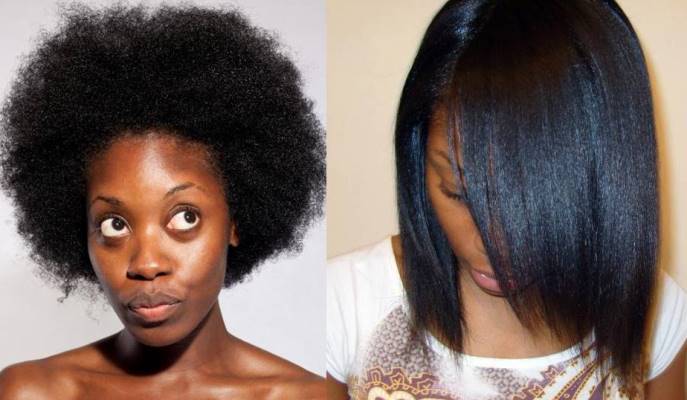How Synthetic Hair Braids Pose A Health Risk To Black Women

Table of Contents
Traction Alopecia and Hair Loss from Tight Braiding
Understanding Traction Alopecia
Traction alopecia is a type of hair loss caused by prolonged pulling or tension on the hair follicles. Tight braiding, particularly when using heavy synthetic hair extensions, is a significant contributor to this condition. The constant pulling weakens the hair follicles, eventually leading to hair thinning, breakage, and even permanent hair loss.
- Mechanics of Hair Follicle Damage: Tight braids put excessive pressure on the hair roots, disrupting the hair growth cycle and causing miniaturization of the follicles. Over time, this miniaturization leads to thinner, weaker hair strands that are more prone to breakage.
- Symptoms of Traction Alopecia: The signs of traction alopecia can be subtle initially, starting with a receding hairline, especially along the temples and edges. You might also notice increased hair breakage, thinning, or a feeling of tightness on your scalp. In advanced cases, significant hair loss and bald patches can develop.
- Long-Term Consequences: If left untreated, traction alopecia can lead to permanent hair loss in the affected areas. Early intervention and adjustments to hair styling practices are essential to prevent irreversible damage.
Scalp Infections and Irritation from Synthetic Materials
The Role of Synthetic Materials
Synthetic hair fibers, while convenient and versatile, can create an environment conducive to bacterial and fungal growth. The lack of breathability under tightly braided synthetic hair can trap moisture, sweat, and dead skin cells, fostering the growth of microorganisms.
- Common Scalp Infections: Folliculitis, an inflammation of the hair follicles, and tinea capitis, a fungal infection of the scalp (ringworm), are common infections associated with synthetic braids.
- Symptoms of Scalp Infections: Symptoms can range from mild itching and inflammation to painful sores, pustules, and scaling of the scalp. In severe cases, you may experience fever and swollen lymph nodes.
- Importance of Scalp Hygiene: Maintaining good scalp hygiene is critical when wearing synthetic braids. Regular cleansing with a gentle, sulfate-free shampoo and careful drying of the scalp can significantly reduce the risk of infections.
Chemical Exposure and Allergic Reactions
Chemicals in Synthetic Hair
Many synthetic hair extensions contain chemicals to enhance their texture, color, and durability. These chemicals, although often within safety regulations, can cause allergic reactions or sensitivities in some individuals. Prolonged contact with the scalp can lead to irritation and other health issues.
- Common Chemicals: Formaldehyde, dyes, and other preservatives are commonly found in synthetic hair products.
- Potential Allergic Reactions: These chemicals can cause contact dermatitis (skin inflammation), itching, burning, and even more severe allergic reactions in sensitive individuals.
- Choosing High-Quality Hair: Opting for high-quality synthetic hair with minimal chemical processing can reduce the risk of allergic reactions and sensitivities. Look for brands that disclose their ingredients clearly and prioritize natural or low-chemical alternatives.
Preventing Health Risks Associated with Synthetic Hair Braids
Safe Braiding Practices
Adopting safe braiding practices is crucial for minimizing the health risks associated with synthetic hair braids.
- Less-Damaging Braiding Styles: Choose looser braiding styles that don't put excessive tension on the hair follicles. Consider styles that allow for better scalp ventilation.
- Lighter Weight Extensions: Opt for lighter weight synthetic hair extensions to reduce the strain on your hair and scalp.
- Regular Scalp Checks and Cleaning: Regularly check your scalp for signs of irritation, infection, or hair loss. Clean your scalp thoroughly and gently to remove product buildup and dead skin cells.
- Seeking Professional Help: If you experience persistent scalp irritation, infection, or significant hair loss, consult a dermatologist or trichologist immediately.
Conclusion
Synthetic hair braids, while aesthetically pleasing, can pose significant health risks to Black women if not managed carefully. Traction alopecia, scalp infections, and allergic reactions are among the potential consequences of improper usage and maintenance. By understanding the potential health risks associated with synthetic hair braids, you can take proactive steps to protect your hair and scalp. Choose wisely, prioritizing your health when selecting synthetic hair braiding techniques and products. Remember that healthy hair practices are key to maintaining a beautiful and healthy scalp. Make informed choices to minimize the risk and enjoy the beauty of your braids without compromising your health.

Featured Posts
-
 Gwen Stefanis Sheer Little Black Dress At The Opry 100 Celebration
May 27, 2025
Gwen Stefanis Sheer Little Black Dress At The Opry 100 Celebration
May 27, 2025 -
 Watch Mobland Episode 9 Tom Hardy And Pierce Brosnan Online Free
May 27, 2025
Watch Mobland Episode 9 Tom Hardy And Pierce Brosnan Online Free
May 27, 2025 -
 Honest Conversations About Sex The College Experience
May 27, 2025
Honest Conversations About Sex The College Experience
May 27, 2025 -
 Gops Ambitious Agenda Key Bills Passed During Trumps Presidency
May 27, 2025
Gops Ambitious Agenda Key Bills Passed During Trumps Presidency
May 27, 2025 -
 Ice Cube To Write And Star In New Last Friday Movie
May 27, 2025
Ice Cube To Write And Star In New Last Friday Movie
May 27, 2025
Latest Posts
-
 Fincantieri Secures New Cruise Ship Order From Tui Ag For Marella Cruises
May 29, 2025
Fincantieri Secures New Cruise Ship Order From Tui Ag For Marella Cruises
May 29, 2025 -
 The Nieuw Statendams Impact On Invergordons Cruise Season
May 29, 2025
The Nieuw Statendams Impact On Invergordons Cruise Season
May 29, 2025 -
 Nieuw Statendam Invergordons First Major Cruise Ship Of The Season
May 29, 2025
Nieuw Statendam Invergordons First Major Cruise Ship Of The Season
May 29, 2025 -
 Easter Ross Port Of Invergordon Sees Arrival Of Nieuw Statendam
May 29, 2025
Easter Ross Port Of Invergordon Sees Arrival Of Nieuw Statendam
May 29, 2025 -
 Invergordon Welcomes Nieuw Statendam Easter Ross Cruise Season Underway
May 29, 2025
Invergordon Welcomes Nieuw Statendam Easter Ross Cruise Season Underway
May 29, 2025
